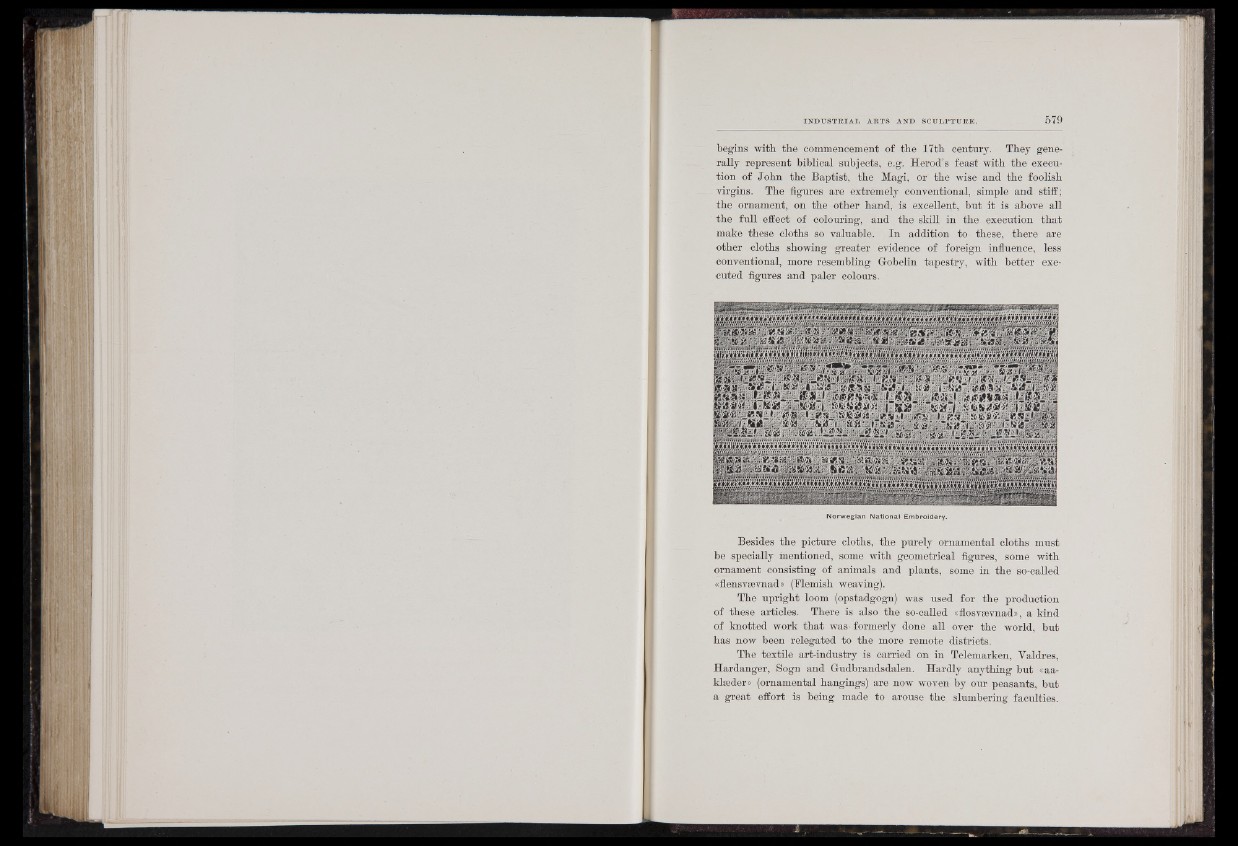
begins with the commencement of the 17th century. They generally
represent biblical subjects, e.g. Herod’s feast with the execution
of John the Baptist, the Magi, or the wise and the foolish
virgins. The figures are extremely conventional, simple and stiff;
the ornament, on the other hand, is excellent, but it is above all
the full efEect of colouring, and the skill in the execution that
make these cloths so valuable. In addition to these, there are
other cloths showing greater evidence of foreign influence, less
conventional, more resembling Gobelin tapestry, with better executed
figures and paler colours.
iilH§ra^®B véfâMs&ÆWæjfÆMl
Norwegian National Embroidery.
Besides the picture cloths, the purely ornamental cloths must
be specially mentioned, some with geometrical figures, some with
ornament consisting of animals and plants, some in the so-called
«flensvævnad» (Flemish weaving).
The upright loom (opstadgogn) was used for the production
of these articles. There is also the so-called «flosvævnad», a kind
of knotted work that was, formerly done all over the world, but
has now been relegated to the more remote districts.
The textile art-industry is carried on in Telemarken, Yaldres,
Hardanger, Sogn and Gudbrandsdalen. Hardly anything but «aa-
klæder» (ornamental hangings) are now woven by our peasants, but
a great effort is being made to arouse the slumbering faculties.